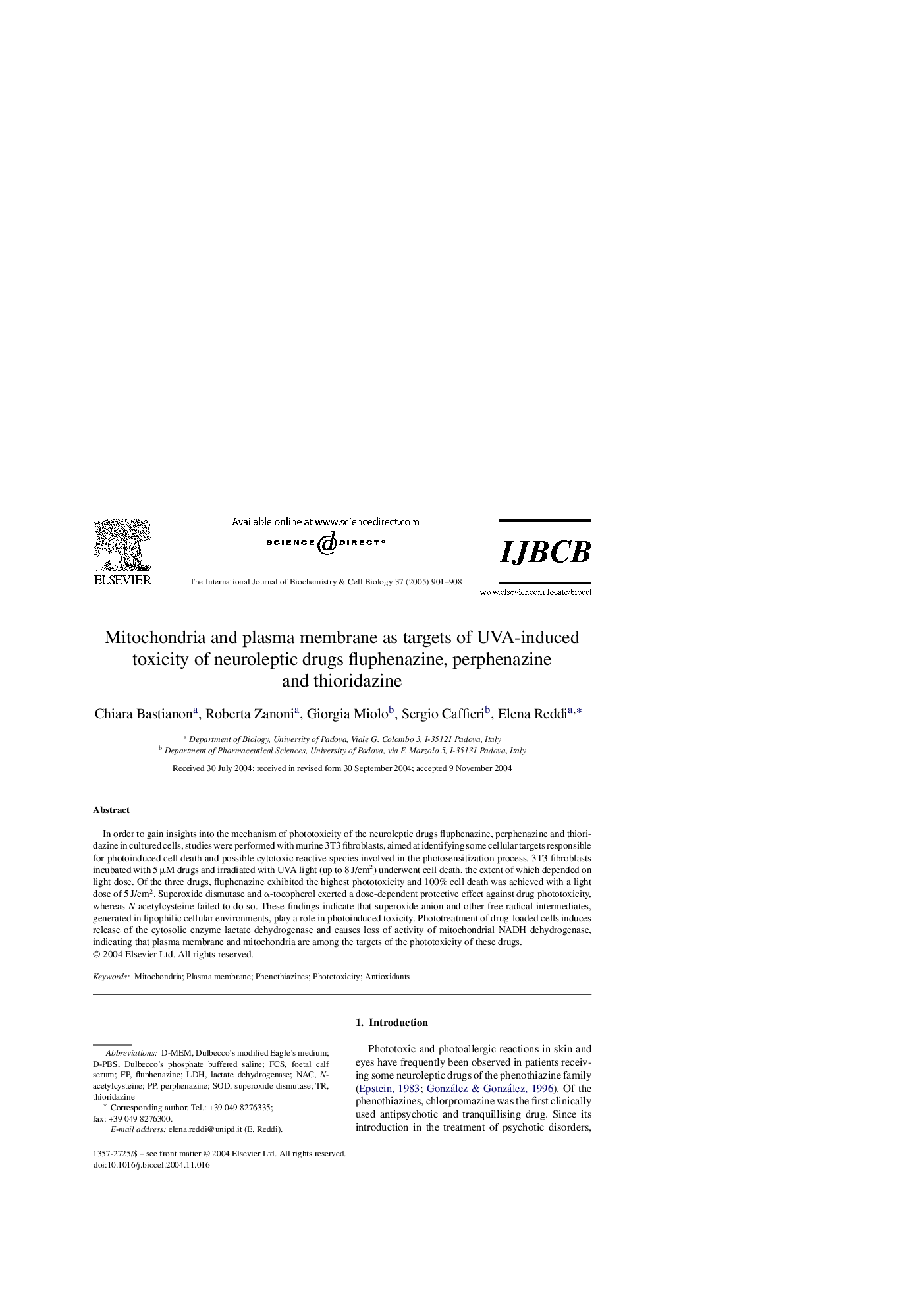| کد مقاله | کد نشریه | سال انتشار | مقاله انگلیسی | نسخه تمام متن |
|---|---|---|---|---|
| 9890066 | 1539999 | 2005 | 8 صفحه PDF | دانلود رایگان |
عنوان انگلیسی مقاله ISI
Mitochondria and plasma membrane as targets of UVA-induced toxicity of neuroleptic drugs fluphenazine, perphenazine and thioridazine
دانلود مقاله + سفارش ترجمه
دانلود مقاله ISI انگلیسی
رایگان برای ایرانیان
کلمات کلیدی
NACFCSD-PBSD-MEMDulbecco's modified Eagle's medium - Medal of Eagle اصلاح شده DulbeccoN-acetylcysteine - N-استیل سیستئینAntioxidants - آنتی اکسیدانThioridazine - ترییدیدینSOD - سدfoetal calf serum - سرم گوساله جنینSuperoxide dismutase - سوکسوکس دیسموتازPlasma membrane - غشای پلاسماPhototoxicity - فتوتوکسیسیتیDulbecco's phosphate buffered saline - فسفات باسیل نمک DulbeccoFluphenazine - فلوفنازینPhenothiazines - فنوتیازین هاlactate dehydrogenase - لاکتات دهیدروژناز LDH - لاکتات دهیدروژناز به صورت مختصر شده LDH Mitochondria - میتوکندریاPerphenazine - پروپرانازین
موضوعات مرتبط
علوم زیستی و بیوفناوری
بیوشیمی، ژنتیک و زیست شناسی مولکولی
زیست شیمی
پیش نمایش صفحه اول مقاله

چکیده انگلیسی
In order to gain insights into the mechanism of phototoxicity of the neuroleptic drugs fluphenazine, perphenazine and thioridazine in cultured cells, studies were performed with murine 3T3 fibroblasts, aimed at identifying some cellular targets responsible for photoinduced cell death and possible cytotoxic reactive species involved in the photosensitization process. 3T3 fibroblasts incubated with 5 μM drugs and irradiated with UVA light (up to 8 J/cm2) underwent cell death, the extent of which depended on light dose. Of the three drugs, fluphenazine exhibited the highest phototoxicity and 100% cell death was achieved with a light dose of 5 J/cm2. Superoxide dismutase and α-tocopherol exerted a dose-dependent protective effect against drug phototoxicity, whereas N-acetylcysteine failed to do so. These findings indicate that superoxide anion and other free radical intermediates, generated in lipophilic cellular environments, play a role in photoinduced toxicity. Phototreatment of drug-loaded cells induces release of the cytosolic enzyme lactate dehydrogenase and causes loss of activity of mitochondrial NADH dehydrogenase, indicating that plasma membrane and mitochondria are among the targets of the phototoxicity of these drugs.
ناشر
Database: Elsevier - ScienceDirect (ساینس دایرکت)
Journal: The International Journal of Biochemistry & Cell Biology - Volume 37, Issue 4, April 2005, Pages 901-908
Journal: The International Journal of Biochemistry & Cell Biology - Volume 37, Issue 4, April 2005, Pages 901-908
نویسندگان
Chiara Bastianon, Roberta Zanoni, Giorgia Miolo, Sergio Caffieri, Elena Reddi,